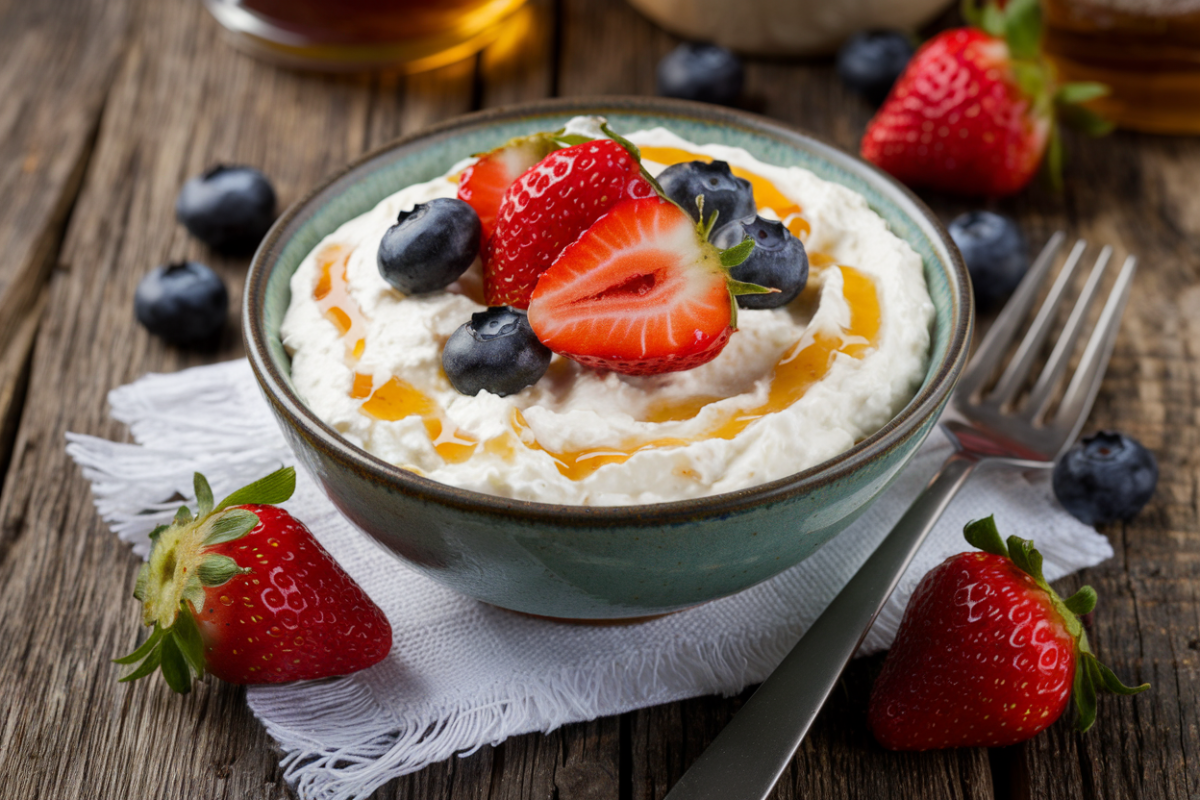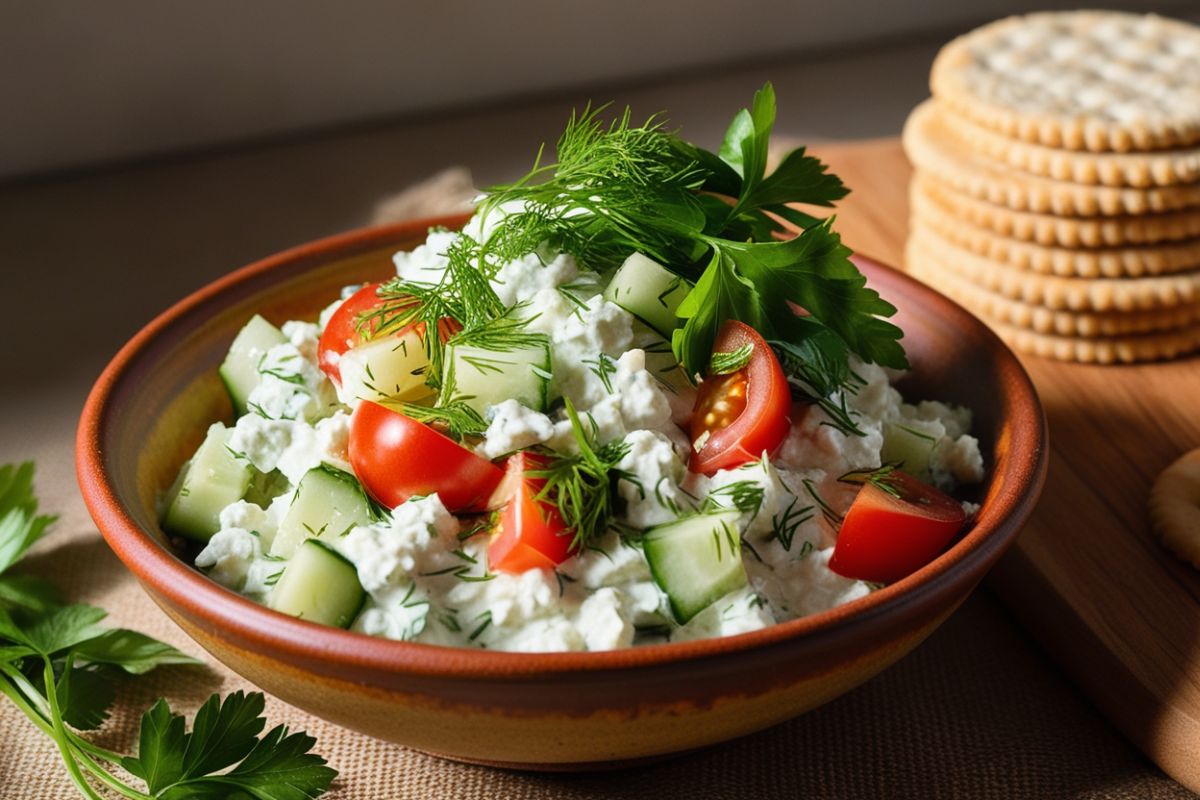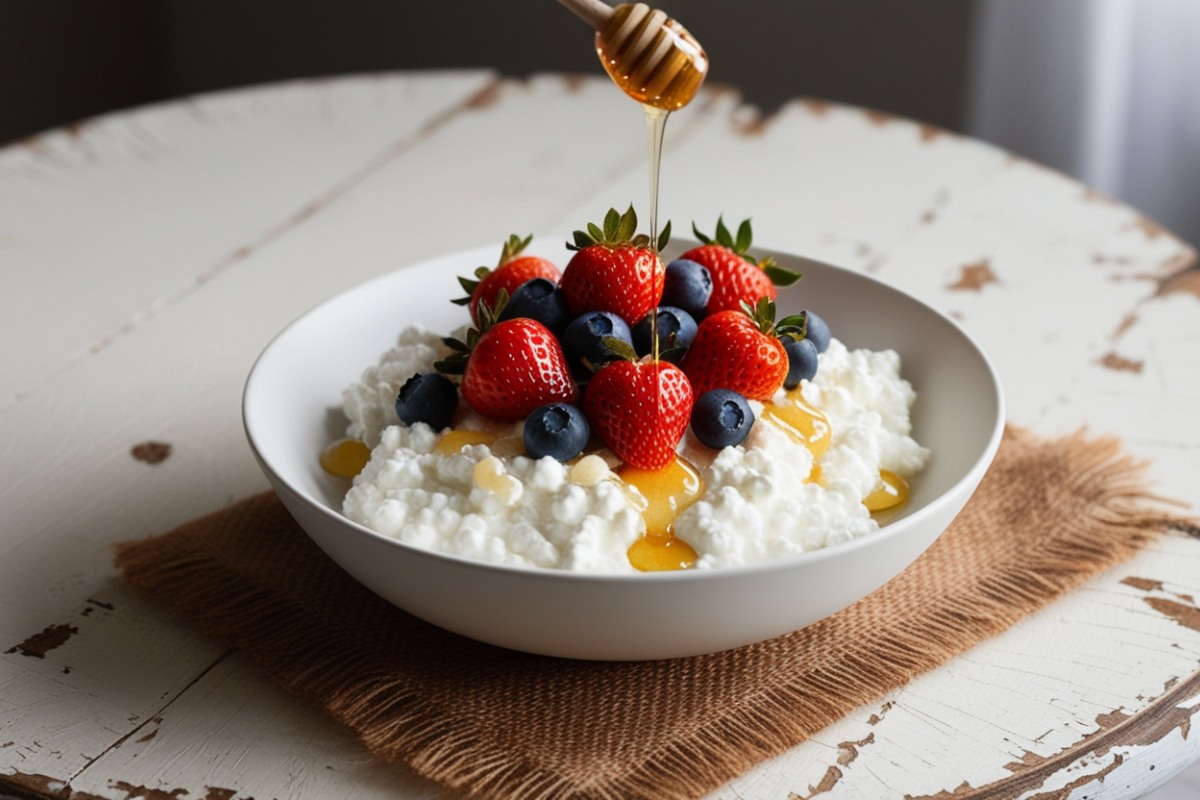🍽️ Introduction
Overview of Cottage Cheese
Cottage cheese is a versatile and protein-packed dairy product known for its mild flavor and creamy, curd-like texture. Whether enjoyed on its own or used as a base for various dishes, cottage cheese has been a popular choice for those seeking a nutritious and satisfying food option. Despite its simple ingredients—milk, cream, and salt—there are countless ways to elevate its taste. Therefore, understanding Improve cottage cheese flavor can turn this humble dairy product into a delicious staple.
Relevance of Cottage Cheese in a Healthy Diet
Cottage cheese is a nutrient-dense food that offers a high protein content while being relatively low in calories. Additionally, it’s an excellent source of calcium, phosphorus, and B vitamins, making it a valuable addition to a balanced diet. As dietary trends lean towards protein-rich and low-carb options, cottage cheese has seen a resurgence in popularity. Consequently, enhancing its flavor can make it even more appealing, ensuring that it not only supports your health goals but also satisfies your taste buds.
🧀 What is Cottage Cheese?

Definition and History
Cottage cheese is a fresh cheese curd product with a mild flavor and a creamy consistency. Its history dates back centuries, originating from simple cheese-making processes used in cottages, hence the name “cottage cheese.” Over time, it has become a staple in many households due to its versatility and health benefits. Thus, understanding make cottage cheese more delicious can help you appreciate its culinary potential even more.
Traditional Ingredients
The basic ingredients of cottage cheese are:
- Milk: is the primary component, providing the base for the cheese curds.
- Cream: Added for richness and creaminess.
- Salt: Enhances flavor and acts as a preservative.
These ingredients combine to create a mildly flavored cheese that pairs well with both sweet and savory additions. Therefore, knowing ways to improve the taste of your cottage cheese involves experimenting with these traditional ingredients to create a more personalized and enjoyable experience.
Variations in Cottage Cheese
As with many traditional foods, cottage cheese has evolved to include various types:
- Low-fat or Fat-free Versions: Offering a lighter option for those watching their fat intake.
- Large Curd vs. Small Curd: Texture preferences vary, and choosing the right card size can significantly impact your enjoyment.
Exploring these variations allows you to discover the best methods to enhance the flavor of cottage cheese based on your personal preferences and dietary needs.
🍯 Enhancing the Taste: How to Make Cottage Cheese More Delicious
Sweet Additions
For those with a sweet tooth, adding fruits or natural sweeteners can transform cottage cheese into a delightful treat. Consider these options:
- Fresh or Dried Fruits: Berries, pineapple, or raisins can add natural sweetness and a burst of flavor.
- Honey or Maple Syrup: A drizzle of honey or maple syrup can elevate the taste of cottage cheese, making it more palatable and indulgent.
- Cinnamon or Vanilla Extract: Adding spices like cinnamon or a splash of vanilla extract can enhance the flavor profile, turning cottage cheese into a dessert-like snack.
Savory Twists
If you prefer savory flavors, there are plenty of ways to enhance the taste of cottage cheese:
- Herbs and Spices: Fresh herbs like chives, dill, or basil, along with a sprinkle of black pepper or paprika, can add a zesty kick.
- Vegetables: Mixing in chopped tomatoes, cucumbers, or bell peppers creates a refreshing, savory dish that’s perfect for a light lunch or snack.
- Nuts and Seeds: Adding a handful of almonds, walnuts, or sunflower seeds can provide a satisfying crunch and boost the flavor of cottage cheese with added texture and nutrition.
Combining with Other Ingredients
Cottage cheese can be combined with various other foods to enhance its flavor:
- Yogurt: Mixing cottage cheese with yogurt can create a creamier texture and a more complex flavor profile.
- Avocado: Mashing avocado into cottage cheese adds healthy fats and a rich, buttery taste.
- Crackers or Bread: Spreading cottage cheese on whole grain crackers or bread can turn it into a hearty snack or meal, making it a more enjoyable and versatile option.
🥗 Nutritional Profile
Macronutrients
Cottage cheese is a nutritional powerhouse, offering:
- Protein: A significant source of protein, essential for muscle repair and growth.
- Carbohydrates: It is low in carbs, making it suitable for low-carb diets.
- Fat: The fat content varies depending on whether you choose full-fat or low-fat versions.
Understanding the nutritional profile is key to knowing how to enhance the taste of cottage cheese while aligning with your health goals.
Vitamins and Minerals
Cottage cheese is rich in essential vitamins and minerals:
- Calcium: is crucial for bone health.
- Phosphorus: supports healthy bones and teeth.
- B Vitamins: are important for energy metabolism and overall well-being.
These nutrients contribute to a balanced diet, and knowing how to enhance the flavor can make cottage cheese a more enjoyable and frequent part of your meals.
🥗 Health Benefits
Role of Protein
The high protein content in cottage cheese supports the following:
- Muscle Growth and Repair: Making it an excellent post-workout snack.
- Satiety: Helps keep you full longer, aiding in weight management.
Digestive Health
Cottage cheese contains probiotics (in some versions), which can support a healthy gut microbiome:
- Probiotics: These beneficial bacteria promote gut health and can improve digestion.
- Low Lactose: Cottage cheese is lower in lactose than other dairy products, making it easier to digest for those with lactose sensitivity.
Enhancing the taste of cottage cheese can encourage more frequent consumption, thereby supporting these health benefits.
🍞 Cottage Cheese vs. Other Dairy Products

Comparison with Greek Yogurt
Cottage cheese and Greek yogurt both offer high protein content, but they differ in texture and flavor:
- Texture: Cottage cheese is chunkier, while Greek yogurt is smoother.
- Flavor: Cottage cheese has a milder taste, which can be a blank canvas for various flavor enhancements.
Comparison with Ricotta Cheese
Ricotta cheese and cottage cheese are often used interchangeably, but:
- Texture: Ricotta is creamier, while cottage cheese has a curd-like texture.
- Usage: Cottage cheese is more versatile for both sweet and savory dishes.
Knowing these differences can help you understand how to elevate the flavor of cottage cheese in specific recipes or meals.
⚖️ Is Cottage Cheese Good for Weight Loss?
Caloric Content
Cottage cheese is low in calories, making it suitable for weight loss:
- Calories per Serving: This typically ranges from 80 to 100 calories per half-cup serving, depending on the fat content.
Satiety and Weight Management
- Protein: The high protein content helps promote a feeling of fullness, aiding in weight control.
- Low Carbohydrates: Suitable for low-carb diets, contributing to weight management.
Understanding how to make cottage cheese more delicious can, as a result, encourage its inclusion in a weight loss plan.
⚠️ Potential Drawbacks
Sodium Content
Cottage cheese can be high in sodium:
- Sodium Levels: Some brands contain higher levels of salt, which can be a concern for those monitoring their sodium intake.
Lactose Content
- Lactose Sensitivity: While lower in lactose than other dairy products, it can still cause discomfort for those with lactose intolerance.
🏡 How to Make Cottage Cheese Taste Better at Home
Ingredients to Use
For a more flavorful cottage cheese experience, consider:
- Fresh Fruits or Vegetables: Add freshness and enhance the taste.
- Herbs and Spices: Experiment with different seasonings for a customized flavor.
Step-by-Step Enhancements
- Sweet Version 🥄
- Mix cottage cheese with a handful of fresh berries and a drizzle of honey.
- Savory Version 🌶️
- Combine cottage cheese with chopped tomatoes, cucumbers, and a sprinkle of black pepper.
🍽️ Practical Applications
Incorporating Cottage Cheese into Meals
- Breakfast: Pair with fruit or oats for a protein-rich start to the day.
- Snacks: Enjoy with vegetables or whole grain crackers for a satisfying snack.
Pairing Suggestions
- Healthy Toppings: Top with nuts, seeds, or fresh herbs to make cottage cheese more enjoyable and add nutritional value.
❓ Frequently Asked Questions (FAQs)
What can be added to cottage cheese for better flavor?
Adding fruits, nuts, and spices, or pairing them with other foods, can significantly enhance the flavor.
Is cottage cheese suitable for a low-carb diet?
Yes, cottage cheese is low in carbs and high in protein, making it suitable for low-carb diets.
Is cottage cheese effective for muscle building?
Yes, the high protein content supports muscle repair and growth, making it ideal for those looking to build muscle.
Can I freeze cottage cheese?
Freezing can affect the texture, but it is possible. Thaw slowly in the refrigerator and stir well before eating.
How long does cottage cheese stay fresh?
Typically, cottage cheese stays fresh for about a week after opening, when stored in the refrigerator.
By exploring various ways to improve the flavor of cottage cheese, you can transform this simple food into a delicious and nutritious part of your daily diet. Whether you prefer it sweet or savory, cottage cheese offers endless possibilities for flavor enhancement, making it a versatile and healthful choice.
